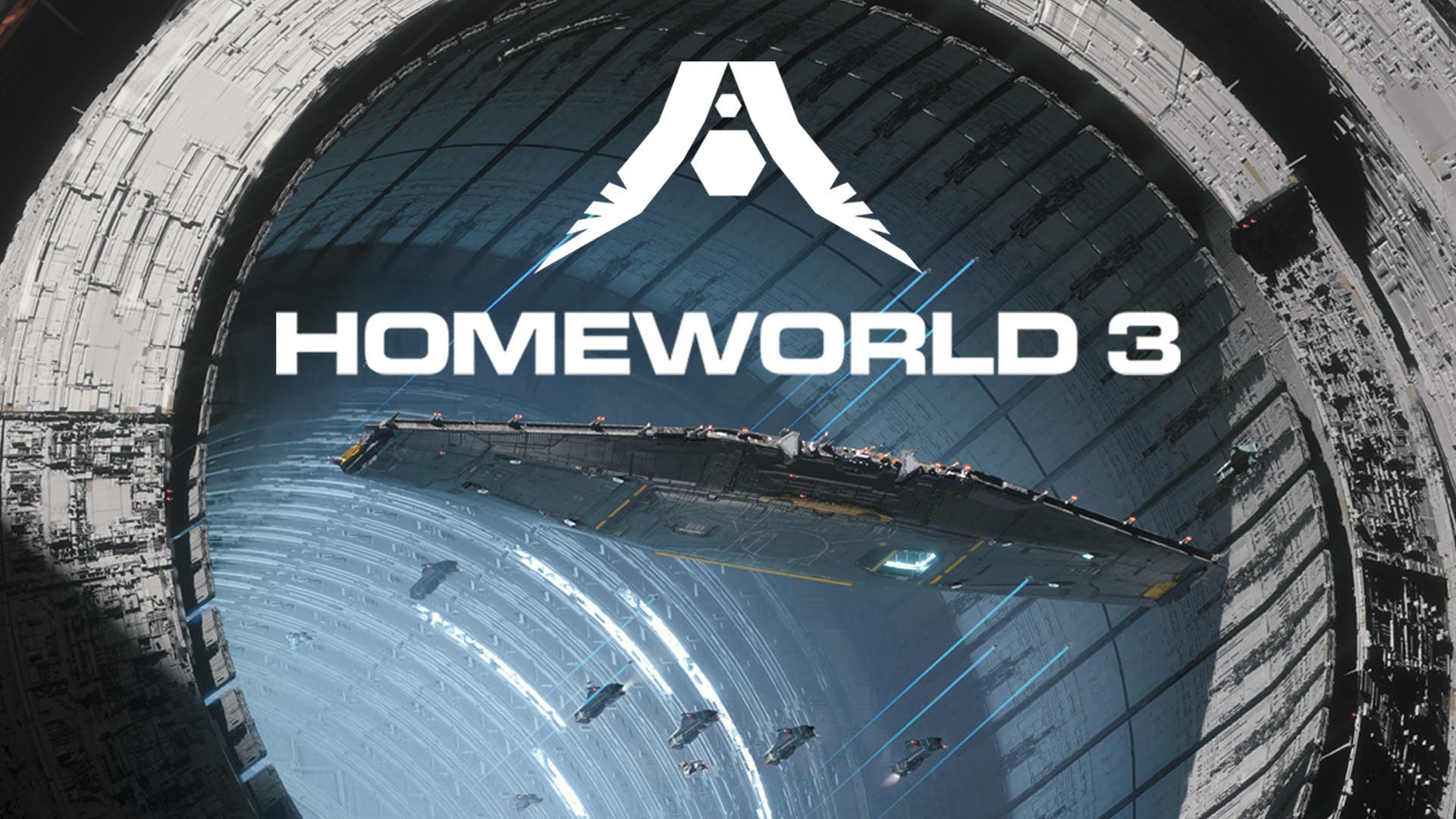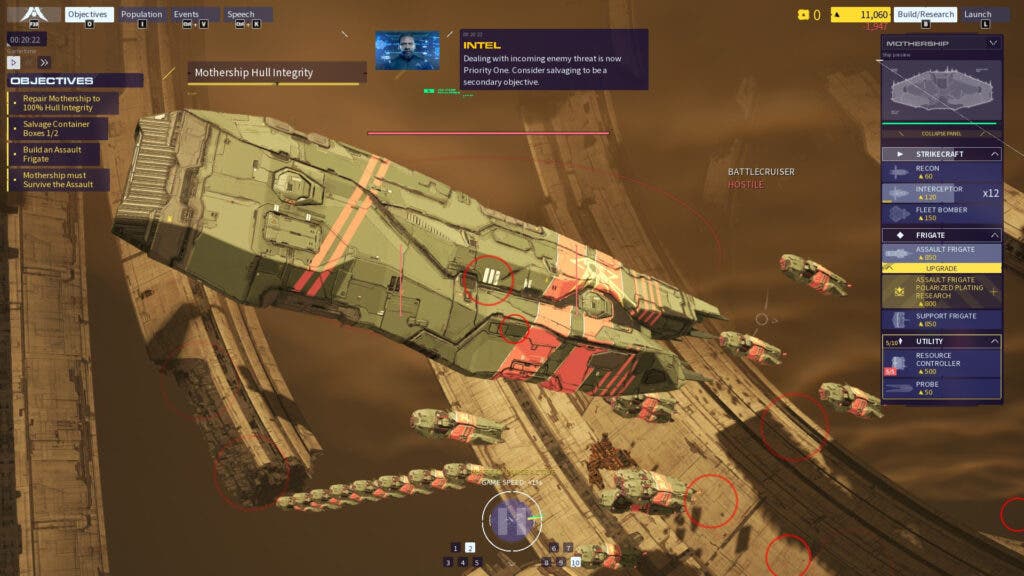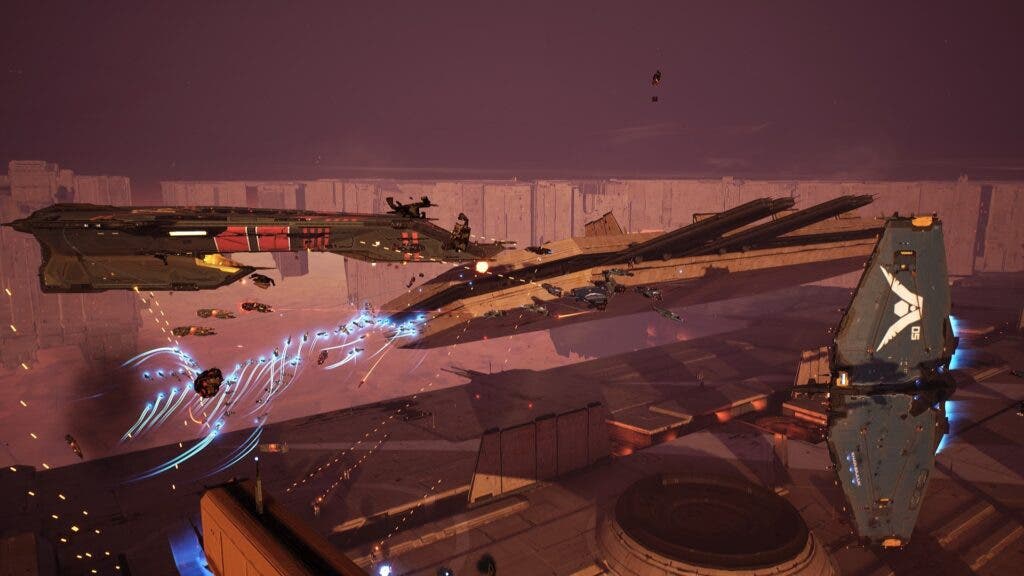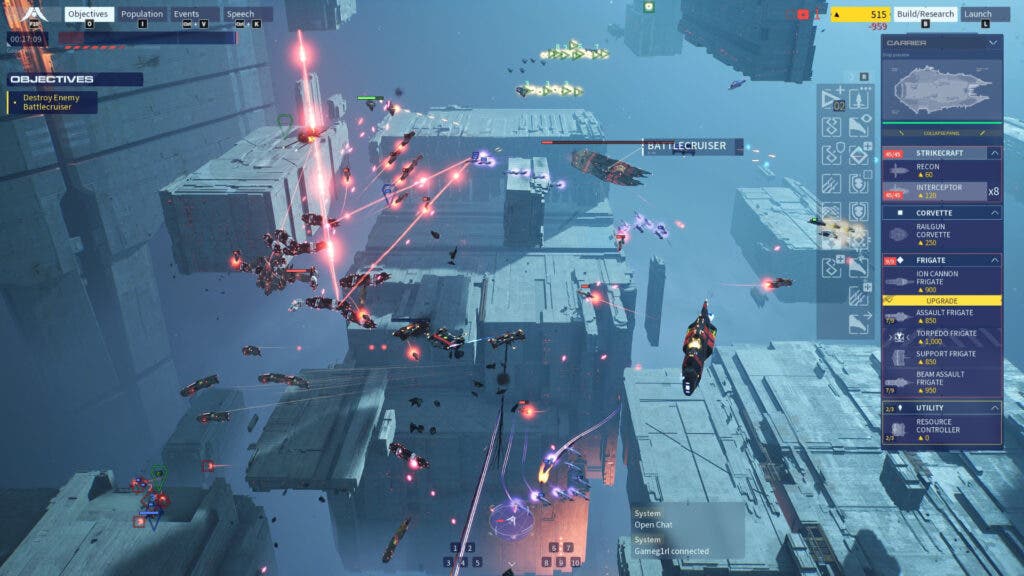I’ve been mulling over what Homeworld 3 means in terms of a game, what it says about me and about the strategy genre. Originally, I meant this to be a review, and it still is in a certain way. But when I saw the awful state it was released in, I told myself, “I should wait a couple of days to see if the developers fix things.” I waited almost two months, to be exact. What changed? My desire to even look at the game, read “what’s coming or what isn’t”. Its icon is sitting on my desktop, untouched for a while now.
For the outside reader, writing about strategy games must be either a dream or something “easy”. I can’t think of a worse genre to cover outside RPGs, especially in a post Starcraft 2 era where either you get a game that’s very tuned to the multiplayer audience, or one that relies a lot on its single-player content. Tomorrow, a new patch will render today’s critique outdated as half of the units will receive buffs and some missions will change. The thing you complained about over three paragraphs is now fixed. I lost count of how many articles about Total War: Warhammer III I wrote that are now outdated and correcting them means rewriting a lot of it or going through very extensive patch notes.
I know, you must be asking at this point what the hell does this have to do with Homeworld 3? Everything, and much more than you can imagine.
You attach a number to something, and you create expectations. If Homeworld 3 was called anything but the third entry on a beloved franchise that was groundbreaking in the early 2000s, it would have received much better by the community. But no, this was “the” entry. The continuation of a story that for all intents and purposes was “finished”. Not in the best way, perhaps, but finished.
Jump forward 100 years and we now have Imogen S’jet, whose mentor is Karan S’jet, a prominent figure in both Homeworld and Homeworld 2 and has disappeared under mysterious circumstances while assessing something described as “The Anomaly” that is threatening the hyperspace gate network — one of the core discoveries at the end of Homeworld 2.
Nothing makes me yawn more than a thing called “The Anomaly”. The Homeworld universe is filled with interesting factions, worlds, and stories that have yet to be told. We got a small glimpse of it with Deserts of Kharak and now we are facing “The Anomaly”? This is the tip of the iceberg when it comes to Homeworld 3 storytelling. The game is the Titanic heading towards it at full speed.
On a good day, I would call it messy, but the description “disjointed and rushed” fits more what Blackbird Interactive accomplished with its 13 campaign missions. These missions must set up the story for those who haven’t played the previous games, act as a tutorial and set the stakes of what “The Anomaly” is, where Karan S’jet fits in the timeline and Imogen S’jet’s backstory.
I have a friend that watches TV shows at 1.5x speed. I keep asking him why he does that. Why can he just, you know, sit down and watch the entire episode as intended? “There’s a lot of filler”, he replies. “I can get the plot points by watching at this speed”. I never understood how, but after playing Homeworld 3’s campaign, that must be what it feels like. You’re thrown into chaos, every character has very little screen time, the stakes keep getting higher and more confusing, there’s barely any room to breathe.
The threat that showed up two missions ago? Oh, sorry, it’s gone. They even had a leader! Which uttered a couple of words, then died or disappeared like a show that’s not doing great audience numbers and is quietly pulled from the schedule. The plot just keeps going, and going, and going, and suddenly ends. “That’s it?”, I stared in disbelief.
I don’t expect every game to spoon feed me information. Quite the contrary, I love when games leave more questions than answers, but that’s not what Homeworld 3 does. It conjures up big evil and insane twists out of thin air to create stakes. It goes to extreme lengths to justify the reasoning behind some of the twists, nothing lands.
The Homeworld franchise was never about that, it was about religion; it was about hope; it was about space being a threat; the unknown being a threat. Every mission in Homeworld was stepping into the unknown. In Homeworld 3 the unknown became waiting for the next “big thing” to happen.
As I watched the cutscenes unfold, I remembered the first time I saw Kharak burning in the first game, how the Hiigarans lost their home. It showcased that space was more than what the Hiigarans knew. Even Deserts of Kharak — the 2016 spin-off that takes place ironically 100 years before the events of Homeworld understands that what is unfolding in its story is bigger than the characters. It doesn’t mean characters aren’t relevant in the Homeworld universe, they are, but they are also part of an evolving story.
Without going too much into spoiler territory, Homeworld 3 ignores the universe around it to focus on a couple of characters and for a couple of hours and then expects you to resonate with them. It’s… it’s bad.
In the middle of this mess of a campaign, there are things that reminded me that Homeworld 3 was, indeed, part of the Homeworld franchise. Its aesthetics — which are still top-notch and showcases how great the art team at Blackbird Interactive is — and the gameplay…. To some extent.
Blackbird Interactive took a massive gamble with Homeworld 3, they ditched a lot of the systems that made Homeworld 2 interesting — such ships hard parts and ship variety — in favor of mega-structures and maps that can create concealment by positioning ship groups behind derelicts or walls. It didn’t pay off.
This isn’t the first time that the franchise tries something like this. There were “mega-structures” in some of the final campaign missions of Homeworld 2, but they acted more as set dressing than anything else. The tech and the processing power needed for both the player and the AI to do proper pathfinding under those circumstances wasn’t there in 2003. It is here in 2024 but, well, it comes with its own suite of issues.
There is a reason Relic — the original developer of Homeworld — was so highly regarded in the 2000s. They did a lot of things in the strategy space that sounded impossible to a lot of people. Homeworld used a 3D space for its battles in 1999. Flanking maneuvers, fleet positioning, and formation must be taken into consideration on every axis. Do you have any idea how hard it is to create something like that? Let me tell you: It was so hard that very few developers attempted. Relic would then revolutionize real time strategy again in 2006 with “Company of Heroes” and its destruction system. Nowadays, I can’t think of a single real time strategy game that doesn’t have some kind of destruction applied to it.
When I first read about the lack of ship variety and hard parts in Homeworld 3, I accepted it as a sort of “middle ground” where the team at Blackbird Interactive could create a better pathfinding system. Oh, if only that was the case.
I’m still not sure if I fought the game’s awful pathfinding or my enemies. Ships would constantly forget their formation, using waypoints was a waste of time. Attacking from the rear was the best tactic, since everything else sounded utterly useless.
This was the tipping point for me, dear reader. I became obsessed with figuring out what was “wrong” with Homeworld 3. Spent countless hours creating scenarios and documenting results. I created spreadsheets with damage values. The damage was pretty much equal if I hit a ship from the bottom or from the sides using a strike craft or a corvette. Then came the 1.1 patch at the beginning of June. After its release, some ships receive directional damage, but you would only figure that out if you read the patch notes.
Why does it matter so much? Because Homeworld 3 is built around multiplayer. The campaign is there, sure, but the main course — although Blackbird Interactive might never say that — is the War Games, a roguelite skirmish mode where you can play solo or co-op. It has special artifacts, rules, units and everything that’s “missing” from the rest of the game. Even the skirmish mode itself where players pit two or more mother ships against each other.
You might be wondering “Wait, Homeworld, multiplayer?” Yes! A lot of people don’t know or don’t remember but both Homeworld and Homeworld 2 had very healthy multiplayer scenes, so much so that both have a variety of mods that add new ships, more complexity and more maps. If you search hard enough, you might find one or two people still willing to play multiplayer.
The Homeworld community has been vital to its existence for decades now. Not only because of mods but also to fix issues. As I went on my complete obsession over damage numbers and directional damage, I recalled the release of Homeworld Remastered Collection. It was great to see both games remastered, but there was one thing wrong — a thing only the community would notice — the ship formations weren’t working properly. One of the core features of the first two games was botched. It took almost a year to get it fixed.
Once again, the community is back at it, using the current mod tools to add more skirmish maps, to port ships and fleets from War Games to skirmish, to try to rebalance the game, to increase fleet size per map and add more “flavor” to the tiny ship pool Homeworld 3 has.
Around the same time Homeworld 3 was released, another big strategy sequel hit the digital stores, Men of War 2. The sequel to a very niche World War II game, and with a very vocal community. Best Way, the developers of the sequel, had a couple of ideas of their own to “innovate” the franchise. Instead of pushing everything new and shiny, they took a step back and said “Okay, we have this new game mode, but you can also play like the previous titles in the classic mode”. Despite some backlash, all parties were pleased with the game’s outcome.
Guess which game I spend more time on? Exactly.
I wouldn’t be so annoyed if Homeworld 3 was instead called Homeworld: The Moen Era or something like that. As I said above, you set expectations when you add a number to something, and you hope to live up to it. Homeworld 3 doesn’t.
I’m tired folks. I’m tired as a critic, as a player, as a consumer. I’m tired of seeing my favorite strategy titles being gutted, destroyed, not getting enough attention. Hell, I dedicated the past 11 years of my life to showcase how strategy games are still alive and kicking, although for a much smaller audience. Last year I saw Company of Heroes 3 transforming from a shell of its former self to a “brand new game” once the community was vocal enough. The game is in a much better shape in 2024, but a far cry from what Company of Heroes 2 was.
I’m sitting here, in the middle of the night, wrapping this article. And for what? A strategy game thrown into the pile of “games I will revisit at some point, maybe, I don’t know”. Another year where long form articles are being replaced by short form “content” (sorry, I hate the word). Another week, another month of “aw man” after watching this industry burn with layoffs and closures. I can feel the ground giving way, that I won’t be able to do this for much longer.
I want to believe that Blackbird Interactive will turn this (mother)ship around; that they’ll add more maps, new factions and mechanics like stated in their 2024-2025 roadmap. But I can’t, I’m sorry. I can’t live solely on hopes and dreams. Will Blackbird Interactive survive the mass layoffs to even complete its roadmap?
God, what a mess the current strategy and industry landscape is.
A Steam code was provided by the publisher for review purposes





